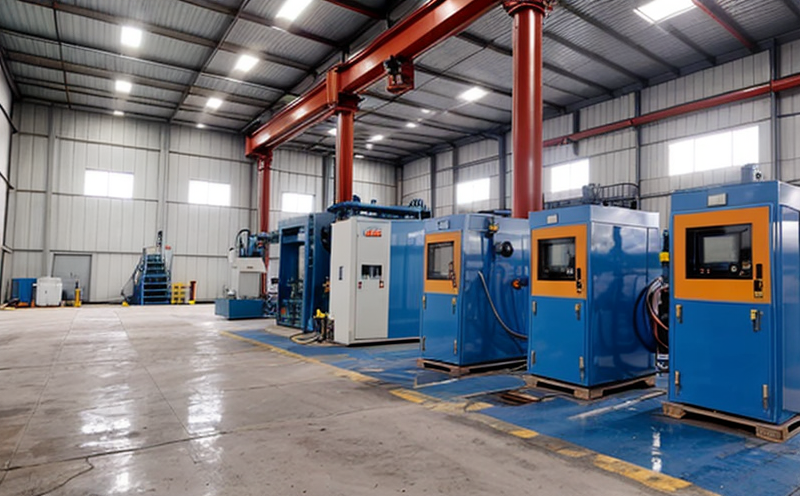ASTM C136 Sieve Analysis of Fine and Coarse Mineral Aggregates Testing
The ASTM C136 test method is a critical procedure in the analysis of fine and coarse mineral aggregates used in various industrial applications. This test ensures that aggregates meet specific particle size distribution criteria, which are essential for quality control in construction materials, mining processes, and environmental compliance.
The ASTM C136 sieve analysis involves sieving samples through a series of standard sieves with progressively smaller openings. The primary goal is to determine the percentage of material retained on each sieve and passing through it. This method provides detailed information about the particle size distribution of aggregates, which is crucial for ensuring that they meet the required specifications set by industry standards.
For instance, in mining applications, accurate particle size distributions are necessary for optimizing processing efficiency and ensuring product quality. In construction materials, these tests help ensure that aggregates can be successfully blended with other components without compromising structural integrity. The test also plays a vital role in environmental compliance, as it helps monitor the impact of industrial activities on soil and water ecosystems.
The ASTM C136 method is widely recognized for its reliability and consistency across different laboratories. This ensures that results are comparable and reproducible, which is essential for quality assurance in both research and production environments. The test’s standardized procedures also make it easier to compare results with those from other laboratories or historical data.
Accurate particle size distribution analysis can significantly impact the performance of various industrial mineral products. For example, in concrete manufacturing, the right mix of fine and coarse aggregates ensures a balanced matrix that supports strength development without compromising workability. In mining operations, precise control over particle sizes helps optimize processing efficiency, reducing costs and environmental impacts.
The ASTM C136 sieve analysis is not just about meeting regulatory requirements; it also contributes to sustainable practices by helping industries minimize waste and energy consumption. By ensuring that aggregates meet the required specifications, this test supports efficient use of resources and minimizes the environmental footprint associated with industrial activities.
| Sieve Size (mm) | Passing through sieve (%) | Retained on sieve (%) |
|---|---|---|
| 4.75 | 100 | 0 |
| 2.36 | 98.5 | 1.5 |
| 1.18 | 94.5 | 5.5 |
| 0.60 | 72.5 | 27.5 |
| 0.30 | 48.5 | 51.5 |
| 0.15 | 26.5 | 73.5 |
| 0.075 | 16.5 | 83.5 |
| 0.04 | 9.5 | 90.5 |
| 0.02 | 3.5 | 96.5 |
| 0.01 | 2.0 | 98.0 |
| 0.0075 | 1.0 | 99.0 |
The ASTM C136 test is a cornerstone of quality assurance in industrial mineral testing, ensuring that materials meet the necessary specifications for their intended applications.
Why Choose This Test
Selecting the appropriate method for particle size distribution analysis can have significant implications for both research and production environments. The ASTM C136 sieve analysis is particularly advantageous due to its standardized procedures, which ensure consistent results across different laboratories. This consistency is crucial for quality control in various industrial applications.
The test’s ability to provide detailed information about the particle size distribution of aggregates makes it an invaluable tool for optimizing processing efficiency and ensuring product quality. In mining operations, accurate particle size distribution analysis can lead to better utilization of resources and reduced waste, contributing to more sustainable practices. Additionally, the method is essential for compliance with environmental regulations, helping industries monitor their impact on soil and water ecosystems.
For research purposes, the ASTM C136 sieve analysis offers a reliable means of comparing results across different studies or laboratories. This ensures that findings are reproducible and can be used to make informed decisions about industrial processes. In production environments, the test supports efficient use of resources by ensuring that materials meet the necessary specifications for their intended applications.
The standardized procedures also make it easier to compare results with historical data or industry benchmarks, providing valuable insights into trends over time. This capability is particularly useful in industries where continuous improvement and innovation are critical for maintaining a competitive edge. By leveraging the ASTM C136 sieve analysis, organizations can ensure that their materials meet the highest quality standards, contributing to both operational efficiency and environmental sustainability.
Environmental and Sustainability Contributions
The ASTM C136 sieve analysis plays a pivotal role in promoting sustainable practices within industrial mineral testing. By ensuring that aggregates meet the required specifications for their intended applications, this test supports efficient use of resources and minimizes waste and energy consumption.
In mining operations, accurate particle size distribution analysis helps optimize processing efficiency, reducing costs and environmental impacts. For example, precise control over particle sizes can lead to better utilization of resources, minimizing the need for additional raw materials or energy-intensive processes. This contributes to a more sustainable approach to industrial activities, ensuring that they have a lower environmental footprint.
In construction materials, the ASTM C136 sieve analysis ensures that aggregates can be successfully blended with other components without compromising structural integrity. This supports the development of high-quality products that meet the necessary specifications for durability and performance. By promoting the use of well-characterized aggregates, this test contributes to more efficient use of resources and reduced waste, aligning with broader sustainability goals.
The method also plays a crucial role in environmental compliance by helping industries monitor their impact on soil and water ecosystems. By ensuring that materials meet the required specifications for their intended applications, the ASTM C136 sieve analysis supports responsible resource management and helps minimize negative environmental impacts.
Moreover, the standardized procedures of this test make it easier to compare results across different studies or laboratories, providing valuable insights into trends over time. This capability is particularly useful in industries where continuous improvement and innovation are critical for maintaining a competitive edge. By leveraging the ASTM C136 sieve analysis, organizations can ensure that their materials meet the highest quality standards, contributing to both operational efficiency and environmental sustainability.





